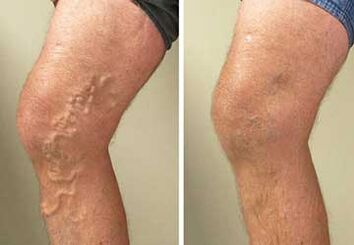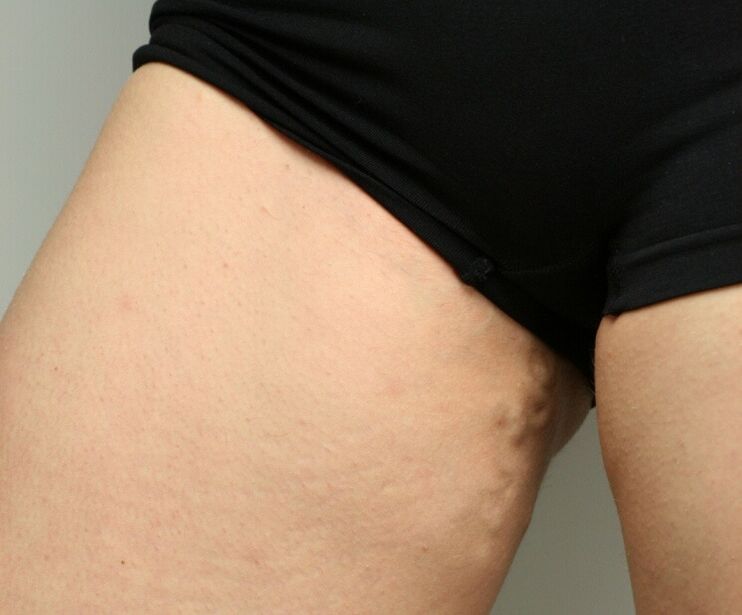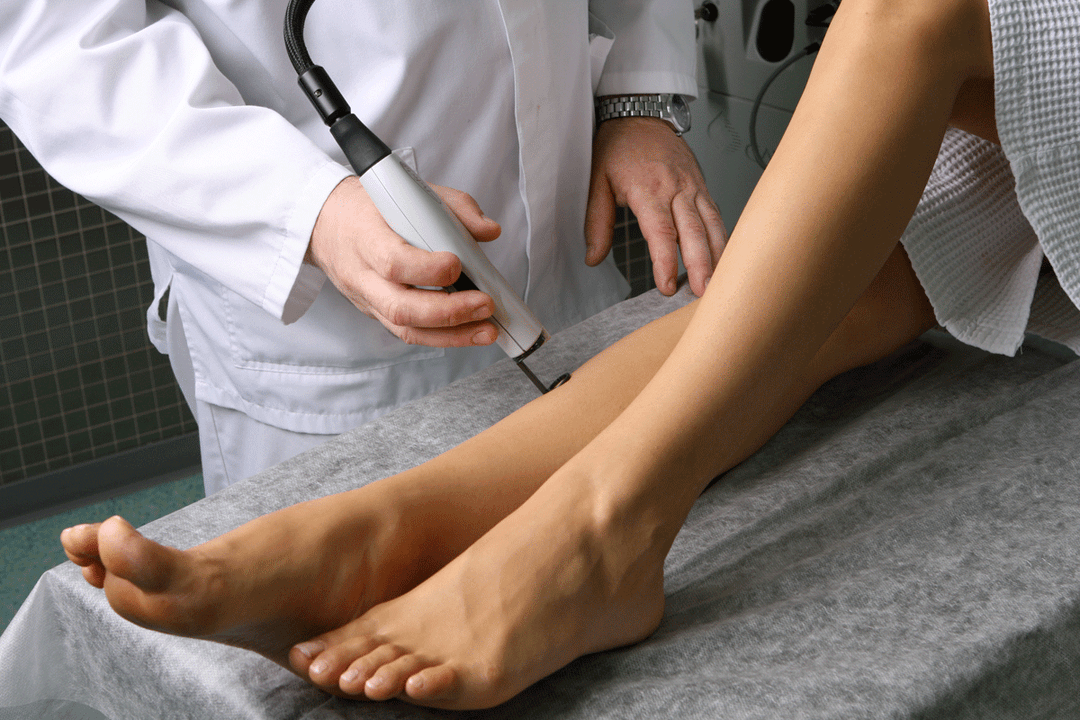In the human body, to provide any part of the body with oxygen and nutrients needed for proper metabolic processes, the blood vessels are provided: arteries and veins. Saturated blood by flowing oxygen through the artery, and blood with processing products flowing through the veins: carbon dioxide and waste from the metabolic process, which need to be conveyed to the organs to remove it from the body. But if the blood flow rate is relatively high throughout the artery, then the blood flow slows in the veins and blood contained in it, overcoming the strength of gravity, returning to the heart. So there is no mechanical flow of blood to the veins, the valve is provided, which is only opened in one direction. After closing them, the blood cannot flow down. But for some reason, these valves lose elasticity, elasticity and they do not close, which allows some of the blood in the veins and accumulates in the veins in larger quantities than those provided by physiological laws.

This excess amount of blood causes the development of veins and causes changes in the blood vessel wall - pockets are formed where stagnant blood is collected. All of these pathological processes are called - varicose or varicose veins. Often, varicose veins are shown in the feet, as larger venous blood volume is collected here, but it is rarely shown in the hand. What contributes to this?
The cause of varicose veins
For the development of any disease, there must be a predisposing and provocative factor. The first includes:
- Descendants of the non -reliability of the structure of the blood circulatory system, especially valve tools,
- congenital changes on the ship,
- Violation of metabolic processes, leading to depletion of vessel walls and loss of elasticity (diabetes mellitus, violation of the function of the thyroid gland and the adrenal gland),
- Age change in the vessel wall.
Provoking factors:
- Inactivity lifestyle, no muscle work is needed for contract and mechanically inducing blood through the vessel,
- Long stands on the feet during the day (teacher, hairdresser, behind the machine in the factory, etc. ),
- Excess weight,
- Pregnancy (metabolism changes and the burden on the foot increases, and intravascular pressure increases during childbirth),
- Long and frequent physical understanding by lifting weight (rods, movers),
- muscle injury or blood vessels,
- The toxic effects of nicotine, alcohol, chemicals, drugs.
Clinical manifestations of varicose veins on the arms and legs
- It all starts with complaints of fatigue in the feet or hands, their rapid fatigue, the feeling of severity and numbness in it begins to appear at the end of the work day, and then always.
- Swelling, swelling appear, more often it is observed on the feet in the evening.
- Extended -deposit vessels became significant, first with physical work and stress, and then they could be seen at rest, so -called vascular stars.
- Confusion (cones) appears throughout the vessel, increasing in volume during physical work or with cough, sneezing (with increased intra -abdomen pressure).

Varicose veins pelvic veins
It is characterized by long -term pain in the pelvis, abundant discharge of the vagina, painful sexual action, fast urination, and urinary incontinence are. A -regnancy and childbirth, tumors in the pelvis and uterus are factors that cause problems, which mechanically squeeze the veins, increased intra -bominal pressure. Pain can be given to any part of the stomach, but more often in the thighs and sacrums.
Development of intra -anabdomen space veins
The most dangerous development of liver veins (portal veins) and esophagus. They are expanded less frequently, but they are harmful to health with possible bleeding, which means difficulty in providing medical treatment in this case.
A harmful complication of varicose disease
- Venous blood survives in the veins and does not undergo cleansing from harmful substances and toxins in time, which means that the body is constantly undergoing itself, which continues to worsen metabolic disorders and intoxication.
- In the nodes or pockets of the blood vessels, the amount of blood accumulates, the blood cells (platelets) are glued together and the thrombus is formed. It can close the same vessel lumen, and it can reach the lungs, the heart, the brain with blood flow and cause a blood supply violation, which shows itself:
- Acute pulmonary artery thromboembolism (respiratory infarction leading to the death of the patient),
- Stroke that can have different properties of functional violations (from small limb paresis to deep defects as well as fatal outcomes),
- myocardial and light infarction,
- Blood vessel thrombosis, leading to blindness.
Varicose vein stage
The first is the level of complaints when there are no signs of vascular damage:
- Convulsive tightening of the back muscles of the foot, brush and shoulders;
- Night burns pain in it;
- Swollen feet and hands after physical work and if you specifically lower your hands or feet and last long without movement, simple shoes in the morning in the evening begin to cause discomfort in the foot.
The second pain becomes more persistent in intensity, longer, the "vascular star" appears, swelling of the feet, which may not pass during sleep until morning. There are restrictions during work, the need for short breaks.
The third pain and numbness is increasing, taking on a constant character, burning at night, while sleeping is difficult for a person to find an easy position. The visual change spoken from the skin appears - the dryness of the skin is enhanced, the tendency for the cracks, the veins appear to develop, the nodules appear. The night's rest does not provide the relief of well -being. For long non -long ulcers appear quickly, in the last period, inflammation in it combines - thrombophlebitis.
Diagnosis of vein development
- Correctly evaluate the patient's complaints.
- Ultrasound examination through the abdominal wall or through the vagina for pain in the pelvis - the presence of batches and lumen development will be visible.
- Dopplerography allows you to estimate the velocity of blood flow through the veins.
In cases of heavy and incomprehensible, surgeons use laparoscopy.

Varicose vein treatment
Not a drug treatment - to normalize the right lifestyle to maintain weight compared to age, to rest in work and to walk, to limit fluid intake. During the rest, give a high position. Use compression pants if needed (socks, golf). Massage course, exercise therapy, spa treatment.
Drug treatment - take special drugs in tablets or use ointment locally in the form of applications and compress
Surgical treatment - intended to remove damaged veins or plastic.
How to prevent the development of varicose veins
- At risk (driver, hairdresser, tailor, surgeon, heavy laborer) should listen carefully to the body's changes, while notice and evaluating the pain syndrome, and not eliminating everything for general fatigue.
- Try to exclude a long body position - to sit with an abandoned foot on another knee, sitting "in the jongkong. " Change your body position more often.
- During the day, to perform small warm (walking, making the body forward and backwards, squatting), so this will allow the muscles to the limbs to pump the blood vessels mechanically. Run a little or jump in place.
- Follow and carry out weight corrections, especially in adulthood, when blood flow rate tends to decrease.
- Do not wear things that tighten the body, excluding linen delays.
- Change heel height during the day from high to low. Priority to give 2-5 high heels. 5 cm.
- Be sure to walk barefoot in artificial pebbles (carpet with needles, shellfish).
- A healthy diet with vitamin C content (vegetable, sauerkraut, berries).
- Excluding bad habits.
- Massage course or lymphatic drainage session.
- Involved in swimming if there are no contraindications - Scandinavian walk.
Note: Varicose veins are progressive, they cannot be cured to resolve healing and are quite dangerous with their complications. You should always remember this and take steps for prevention from a young age and not ignore it when later. Maintaining foot health is a concern for a healthy old age.


















